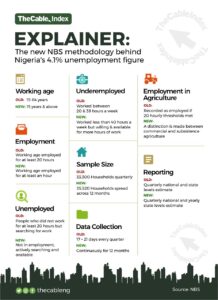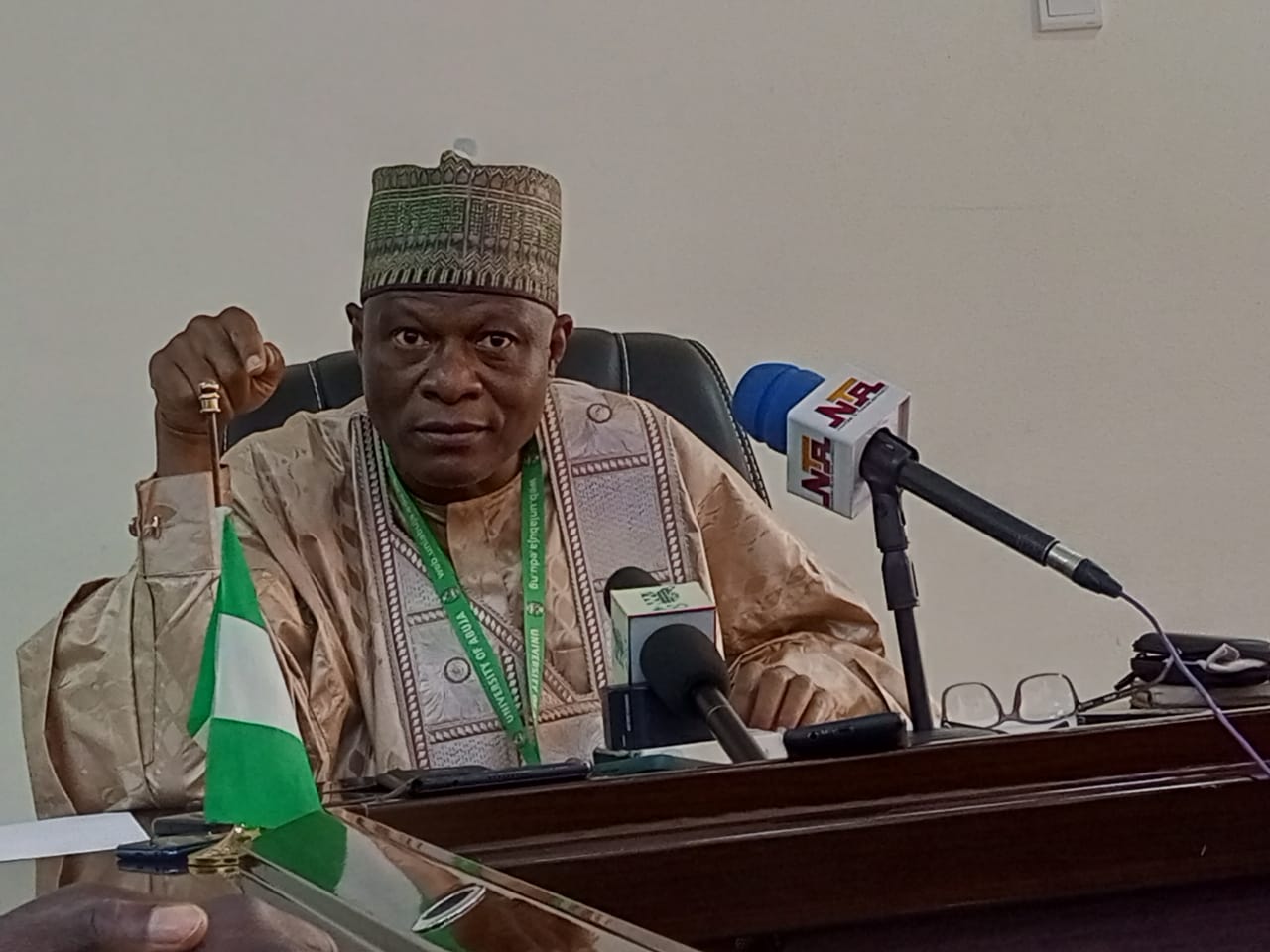File photo of applicants trying to submit their test questions to an immigration officer
The National Bureau of Statistics (NBS), in April 2023, announced that it would be changing the way it calculates the unemployment rate. The new approach, which would align with the International Labour Organisation’s (ILO) guidelines, was expected to reveal a sharp drop in the country’s job data.
On Thursday, the NBS released the labour report for the fourth quarter (Q4) of 2022 and the first quarter (Q1) of 2023; averring that the new methodology was used in data gathering.
Under the old methodology, the NBS pegged Nigeria’s unemployment rate at 33.3 percent as at Q4 2020, but the revised methodology put it at 4.1 percent in Q1 2023.
Since it was released, the labour report has been met with mixed reactions. Some analysts have questioned the accuracy of the new methodology, arguing that it may have led to an underestimation of the true level of unemployment in Nigeria.
Advertisement
TheCable takes a look at how both the old and new methodologies vary and the indices considered in the latter.
WHO ARE THE UNEMPLOYED?
In the old methodology, the NBS categorised the ‘unemployed’ as anyone of working age who worked below 20 hours or did not work but searched and was available in the reference week (the week NBS is carrying out the survey).
Advertisement
Under the new NBS methodology, if you have not worked in the past seven days, have been looking for work in the past four weeks, and are ready to start work; you are considered unemployed.
This means that some people who were previously classified as unemployed are now categorised as employed.
This is because the new methodology does not require people to have worked for at least 20 hours per week to be considered employed. As a result, people who are working in the informal sector, or who are only able to find part-time work, are now classified as employed.
It is important to note that the new methodology does not equate a rise in the unemployment rate to an increase in job losses, or vice versa.
Advertisement
However, an increase in unemployment can occur due to several reasons, of which job loss is just one.
A rise in unemployment generally means the number of people searching for jobs has increased, which can occur because people previously outside the labour force (e.g., students, housewives, etc.) have now joined the labour force or people previously working have lost their jobs and are now in search of jobs.
WHAT SHARE OF NIGERIAN RESIDENTS ARE EMPLOYED?
In the report, the NBS said about three-quarters of working-age Nigerian residents were employed in some type of job in Q4 2022 and Q1 2023.
Advertisement
But to count as employed, an individual must have worked for at least one hour in the previous seven days — making them employed at work; or they must typically work for pay or profit, even if they did not do so in the previous seven days — making them employed, but temporarily absent.
Going by this, anyone who is paid for work, even if it is only for one hour and the pay is as low as N500 or N1,000, is considered employed.
Advertisement
ACTIVE SEARCH FOR JOB
The NBS now considers persons who are actively searching for a job but have not yet found one, to be unemployed. This helps the bureau to measure the number of people who are available and willing to work but are unable to find a job.
Advertisement
“Active search for employment in the NLFS refers to specific action individuals take within the previous four weeks to actively seek a job or start a business,” the report reads.
“Examples of such actions could include submitting job applications, attending job fairs, networking, reaching out to potential employers, and registering with employment agencies amongst others.”
Advertisement

WORKING AGE NOW 15 YEARS AND ABOVE
The NBS also said in the previous methodology, the working-age population was defined as persons aged 15 to 64.
This indicator, the agency said, measures the share of the working-age population in the total population. However, the revised methodology adopted in the latest labour force report, changed the working age to 15 years and above.
Semiu Adeniran, statistician-general of the federation and chief executive officer of NBS, in an interview on Friday, explained that people between 64 years and above and who are still willing to work are considered in this new methodology.
Adeniran advised Nigerians to carefully read the report and focus on the most important information, as it can be used to inform policy decisions.
“Where the issues can come up is the work that people are doing, is it the kind of work they want to do? Then is it the number of hours they want to work they are able to get? Is it the kind of money they want to receive? Those are the information available in the data that can be used for policymaking,” he said.
SAMPLE SIZE AND DATA COLLECTION
Also, in the old methodology, the NBS sampled 33,300 households quarterly; while the new approach adopted a sample size of 35,520 households spread across 12 months.
The agency said under the old system, data collection was between 17-21 days every quarter. However, NBS said data was collected continuously for a period of 12 months under the new methodology.
Add a comment







